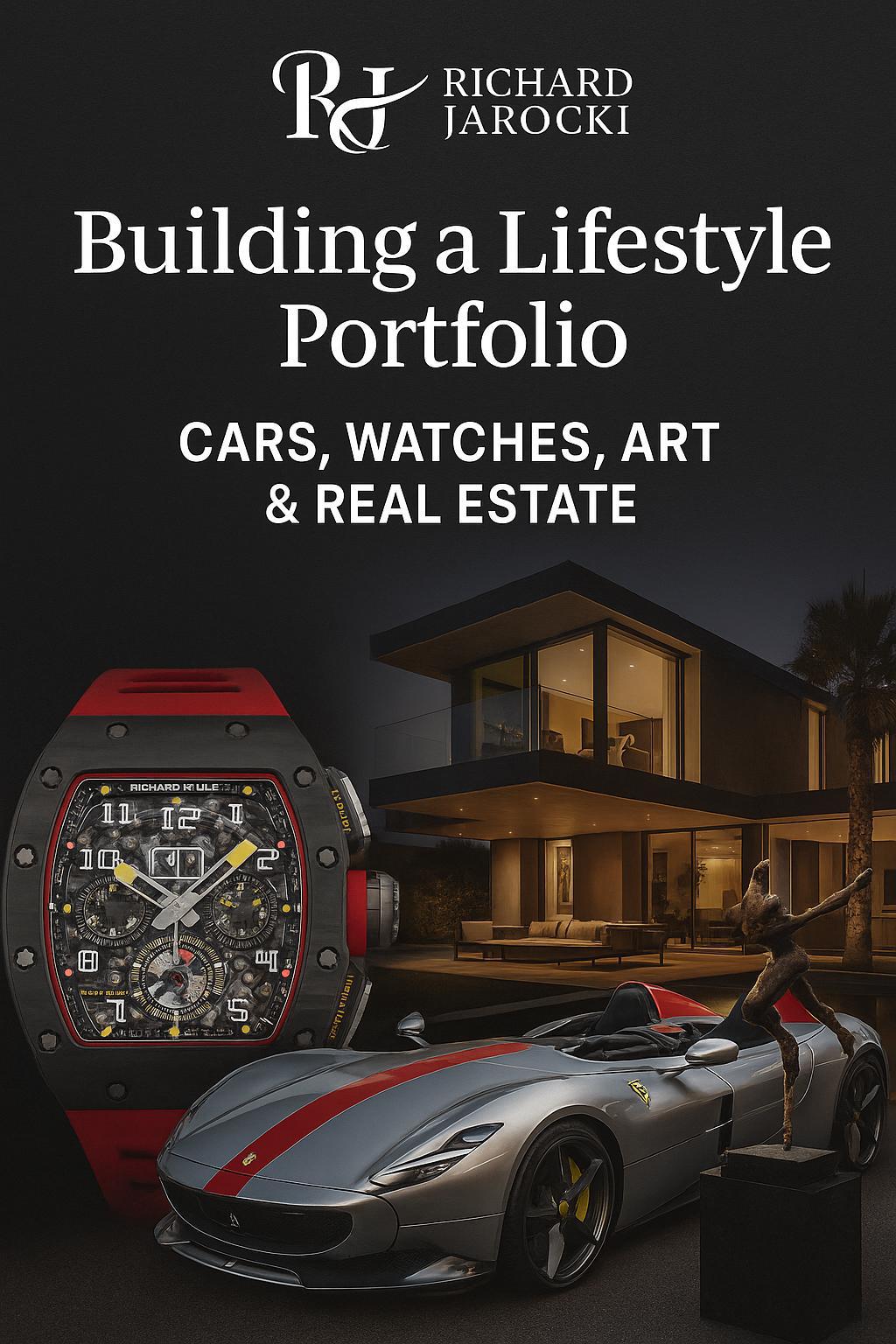
When most people think about wealth, they focus on income, investments, and real estate. But for the ultra-wealthy, status and identity are often communicated through a carefully curated lifestyle portfolio: a selection of assets that aren’t just valuable, but speak to personal taste, cultural capital, and exclusivity.
From investment-grade cars to collectible watches, from blue-chip art to one-of-a-kind residences, this is the world where wealth becomes a story—and each asset is a chapter.
A lifestyle portfolio is a personalized collection of tangible luxury assets that combine utility, emotional resonance, and financial value. It might include:
These aren’t just possessions. They are signals—of taste, access, and belonging. They reflect a narrative of success, global perspective, and discerning choices. What makes a lifestyle portfolio unique is that it balances passion and precision—each item chosen for what it represents, not just what it costs.
For HNWIs and UHNWIs, a lifestyle portfolio accomplishes several goals:
A lifestyle portfolio almost always includes at least one elite automobile—often more. Think limited-production hypercars like:
Collectors often seek rarity (production under 500 units), historical significance (like the Porsche Carrera GT), or provenance (celebrity owners, Le Mans winners, etc). But beyond investment, cars offer thrill. They embody engineering excellence, mechanical artistry, and brand heritage.
Many collectors curate garages around themes—racing lineage, brand loyalty, or even color coordination. Some vehicles are displayed like sculptures in climate-controlled private showrooms, while others are kept road-ready for exclusive rallies or concours d’elegance.
Car portfolios are often stored professionally, insured like art, and sometimes leased to high-profile events or luxury hotels to generate passive value and cultural presence.
Watches are the most wearable part of a lifestyle portfolio. In this space, brands matter—but models matter more:
Timepieces speak to discipline, heritage, and craftsmanship. Unlike digital wearables, luxury watches are timeless tools that bridge tradition and innovation. Some are tied to racing, diving, aviation, or military history—others to fine art and architecture.
Watch collecting is a world of nuance: dial variants, production years, movement complexity, and scarcity drive the conversation. The best collections are personal yet strategic—blending universally revered models with off-the-radar grails.
Art collecting signals not just wealth, but intellectualism and insider culture. A seasoned collector doesn’t just buy a Basquiat or Kusama for the walls—they build relationships with galleries, auction houses, and advisors. It's not just what you buy—it's how, where, and from whom.
Art in a lifestyle portfolio might include:
Collectors may focus on medium (sculpture, photography, mixed media), region (Latin American, African contemporary), or concept (political, abstract, figurative). Many pieces are exhibited globally in museums or loaned to institutions for prestige.
Art also comes with logistical concerns: climate-controlled storage, tax structure, authentication, and provenance. But it also delivers unparalleled social cachet—VIP access to Art Basel, Frieze, or Venice Biennale is a world unto itself.
A penthouse in Manhattan, a villa in Lake Como, a brutalist beach house in São Paulo—real estate as part of a lifestyle portfolio is about story and status, not just square footage.
HNW buyers prioritize:
Trophy homes are often chosen for their emotional resonance and social significance. Some are used for a few weeks a year, others remain unoccupied but serve as showcases for art, entertaining, or brand collaborations.
These properties may also include resort-based homes in St. Barts, branded residences (like Aman or Four Seasons), or historic estates with vineyard, equestrian, or heliport features.
Building a lifestyle portfolio requires more than money. It requires insight, access, and taste. Increasingly, HNWIs are turning to boutique concierge services to help them:
This is where luxury curators like Richard Jarocki step in—not as salespeople, but as strategic advisors who understand how to build cultural capital alongside financial value. It’s not about chasing trends—it’s about building a cohesive and intentional identity through asset curation.
A lifestyle portfolio is more than the sum of its parts. It’s a living archive of who you are, where you’ve been, and what worlds you belong to. It appreciates, it evolves, and sometimes, it inspires.
Whether you're starting with your first exotic car or rounding out a multimillion-dollar collection, what you own says everything about what you value.
And in the world of high culture and high performance, curation is the ultimate luxury.
Need help curating your lifestyle portfolio? Contact Richard Jarocki to begin your journey into the world of hypercars, haute horology, and heritage-level art.